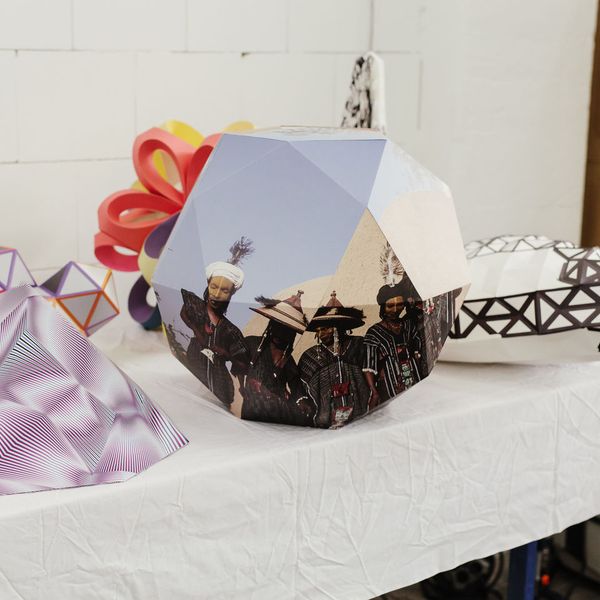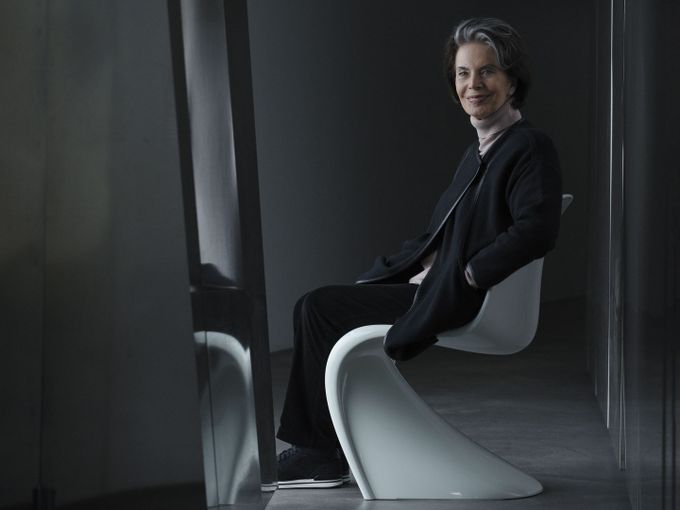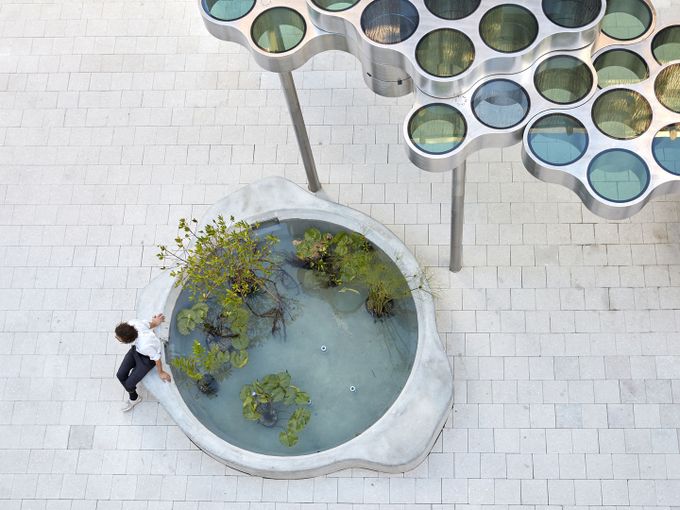On the Trail
Interview with Tobias Rehberger
We talk to Tobias Rehberger on a stroll along his current installation ‘24 Stops’, also known as the Rehberger-Weg, and later in his Frankfurt studio, about what constitutes good art. A portrait by Freunde von Freunden.
Tobias Rehberger’s colourful, eye-catching work often has a witty dimension to it, which ranges from subtle to downright mischievous. Each of his pieces, however, is meticulously thought through on a conceptual level; his work has been exploring notions of interpretation, translation and implementation for years.The playfulness of Rehberger’s work probes the boundaries of art and the possibilities that they provide. The Rehberger-Weg, which was co-commissioned by Vitra and runs the five kilometre distance between the Vitra Campus in Germany and Fondation Beyeler in Switzerland, represents Tobias’s artistic foray into a public domain. ‘The Rehberger-Weg connects an important Swiss art museum with the Vitra Design Museum’, Rehberger explains. ‘I wanted to create something that metaphorically connected the two spaces, and in doing so makes use of different objects to explore ideas of functionality and utility. The sculptures along the Rehberger-Weg range from formally very abstract, yet functional, to figurative in appearance, yet nonfunctional.’
We walk down small lanes and past orchards as we explore Tobias’s latest project ‘24 Stops’, for which he placed a total of twenty-four sculptures – waymarkers – along the five kilometre stretch between the Vitra Campus in Weil am Rhein and the Fondation Beyeler in Riehen. ‘When exhibiting art in a public space it is crucial to both cater to the people who come specifically to see it, and to make sure that it is not too invasive for the people who just happen upon it.’
‘Firmly in the “artist” camp.’
Tobias’s sculptures lead us over the German-Swiss border, and in doing so play with our expectations of the borders between art and design. Tobias blurs these boundaries by offering a range of experiences; the view can be admired through a telescope or from a high chair, for example, and, in the middle of the Rehberger-Weg, a fountain promises refreshment or a cold splash on hot summer days. Modern free art defines itself by the fact that it does not have to fulfil any specific functions.


Rehberger, who comes from a village near Stuttgart, moved to Frankfurt in the early 90s to join a woman he had met on a skiing holiday. He studied under Thomas Bayrle and Martin Kippenberger at the Städelschule, a contemporary fine arts academy where he today teaches a class himself. Since Rehberger’s art often works on a functional level, it is no surprise that he is sometimes mistaken for a designer. ‘I would class myself as more of an artist. My interest in things, and the issues and approaches which are important in my life, belong more to the art domain.’
‘I need to undergo a process of misunderstanding myself before I can come to a new understanding.’
He adds: ‘As my art is principally concerned with form, I would like to say I belong to a lineage of classical sculptors, along with Rodin and Ellsworth Kelly. I see it as irrelevant whether the forms themselves are made using a chisel or a telephone receiver. I would happily describe myself as a fully-fledged artist, although often in the process of creating something I see myself as more of catalyst rather than as an artist ostentatiously expressing himself. The process that goes into my art neither starts nor ends with me; I am essentially manipulating input to generate something new.’
‘As the word itself implies, there is understanding in every misunderstanding; one which is turned on its head. This cognitive confusion is a pivotal part of the kind of art I am interested in. I need to undergo a process of misunderstanding myself before I can come to a new understanding. This is exactly what I want my own art to do: to generate a sense of confusion in the viewer, a changing of perspectives, a turning.’

For a different exhibition, Tobias built an organic shaped yellow seating arrangement that invited gallery visitors to sit, drink and smoke. The curator Nicholas Bourriaud coined the term ‘relational aesthetics’, which succinctly encapsulates such artistic approaches as were popular in the 90s. The focus is on people and their social interactions rather than on the objects themselves. That’s definitely true of Tobias Rehberger’s work.
This portrait is part of a collaboration between Vitra and Freunde von Freunden.
Date of publication: 13.4.2017
Author: Juliane Duft
Photos: Ramon Haindl

















